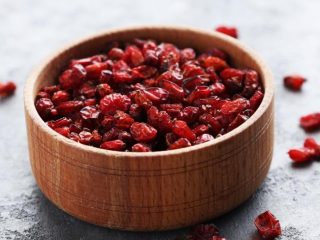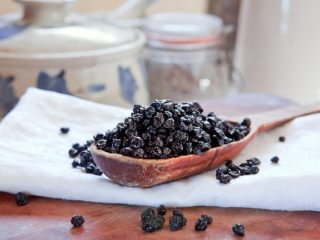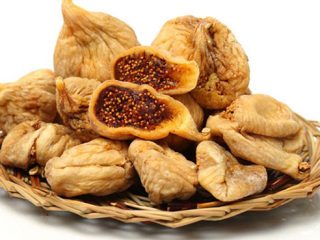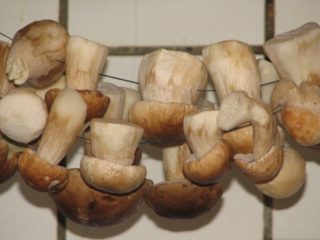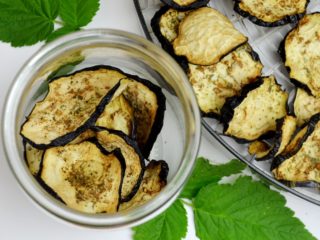Content
- 1 Is it possible to dry raspberries for the winter?
- 2 How to pick raspberries
- 3 Preparing raspberries for drying
- 4 How to properly dry raspberries at home
- 5 How to tell when raspberries are ready
- 6 Storage conditions and periods
- 7 What are the benefits of dried raspberries?
- 8 How to use dried raspberries
- 9 Conclusion
Raspberries are a very tasty and, of course, healthy berry. However, it also has a significant disadvantage - low shelf life. The most common way to preserve crops for the winter is canning, but during heat treatment a significant part of the vitamins, macro- and microelements is lost. There are also more “gentle” options that allow you to maximize the benefits of the berries - you can freeze and dry raspberries at home.
Is it possible to dry raspberries for the winter?
Drying is a universal method of preserving crops for a long time. It is suitable for any fruits and berries, including raspberries. Among the undoubted advantages of this method is the maximum preservation of vitamins, macro- and microelements contained in the fruits and a noticeable reduction in their “volume”.

After drying, raspberries take up much less space than fresh, and the evaporation of moisture from them practically eliminates the development of rot.
How to pick raspberries
For drying, raspberries that are collected taking into account certain nuances are best suited. Knowing them will preserve not only the benefits, but also the presentability of the berries:
- Obviously overripe, soft and sticky raspberries are not suitable for drying. Such berries will definitely not retain their shape; they contain minimal nutrients. The best option is only ripe or slightly unripe raspberries.
- The best time to pick berries for drying is a warm, sunny day. It is advisable that there should be no rain for at least 3-4 days before this. If the raspberries have absorbed a lot of moisture, the drying process is delayed and the risk of rot and mold developing increases.
- Berries with dents, spots indicating infection by pathogenic fungi, or other “imperfections” should be discarded. Their taste after drying leaves much to be desired, and their benefits also suffer.
- The harvest is harvested carefully, minimizing mechanical damage.
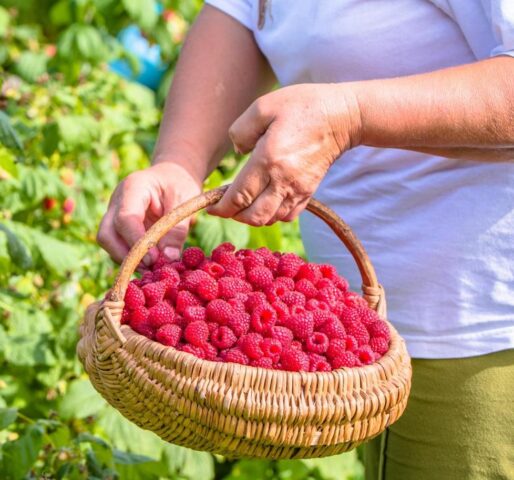
Raspberries for drying are carefully removed from the stalks and placed in a shallow container with a bottom lined with a soft cloth.
Preparing raspberries for drying
Raspberries for drying must be sorted, getting rid of plant and other debris, insects, and the dirtiest and dustiest berries. There is no consensus regarding their washing. It is not recommended, since drying raspberries saturated with moisture is delayed. However, some still wash the berries by quickly rinsing them in cool water. Then they are thrown into a colander and dried, laid out in one layer on paper or linen napkins.

It is not recommended to wash raspberries before drying, but sometimes you can’t do without it.
How to properly dry raspberries at home
There are quite a lot of ways to dry raspberries at home, some of which do not require special “equipment.” Methods that allow you to preserve the maximum benefits of berries take the most time.
Drying raspberries outdoors
This is the longest procedure, but after drying in the open air, about 90% of the nutrients are retained in the raspberries, since they are not subjected to heat treatment even at low temperatures.
Important general rules for drying outdoors:
- Protect the berries from direct sunlight. Long-term exposure to ultraviolet radiation is detrimental to some beneficial substances they contain.
- Find a place where they will not be exposed to rain and dust. It should not be completely closed - fresh air and ventilation are needed for drying.
- Be sure to turn the berries over if they are laid out on a horizontal surface. Otherwise, they will dry on only one side.
The most convenient way to dry raspberries is in a “suspended” state:
- Thread the berries onto a strong thread using a needle.
- Tie its ends, getting a kind of “beads”.
- Hang them in a place that meets all the criteria for drying raspberries.
- Remove after 7-8 days. Store the berries directly on the string. In this form they can even be used for kitchen decoration.
But more often the berries are laid out on a horizontal surface. How to properly dry raspberries for the winter in this case:
- Line trays and baking trays with paper or linen napkins.
- Arrange the berries in one layer so that they do not touch each other. Cover the top with gauze or thin cloth to prevent access of insects.
- Place the pallets in fresh air.
- Every day during drying, inspect the berries, immediately remove specimens with traces of mold and rot, and carefully turn over others.
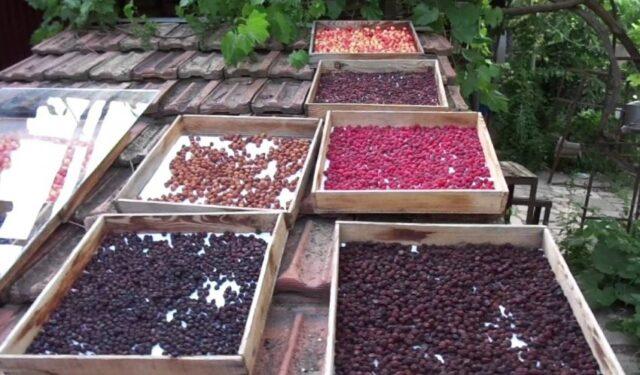
To protect against insects, you can hang sticky tape traps next to raspberries drying in the open air.
How to dry raspberries for the winter in the oven
The oven procedure takes 6-10 hours depending on the size of the berries and temperature. The higher it is, the more the benefits of dried raspberries suffer.
Drying raspberries at home in the oven is easy:
- Line baking sheets with parchment paper, foil or special “reusable” mats.
- Arrange the raspberries to dry in one layer, leaving small gaps between the berries.
- Place the baking sheets in a heated oven; if there is a convection or fan mode, turn it on. If such functions are not provided, open the door 2-3 cm.
- Carefully turn the raspberries every 20-30 minutes to ensure even drying. Once an hour, open the oven slightly for 3-5 minutes, restoring normal humidity inside it.
- At the end of the process, open the door about a quarter and let the oven cool. Then collect the berries from the baking sheets.
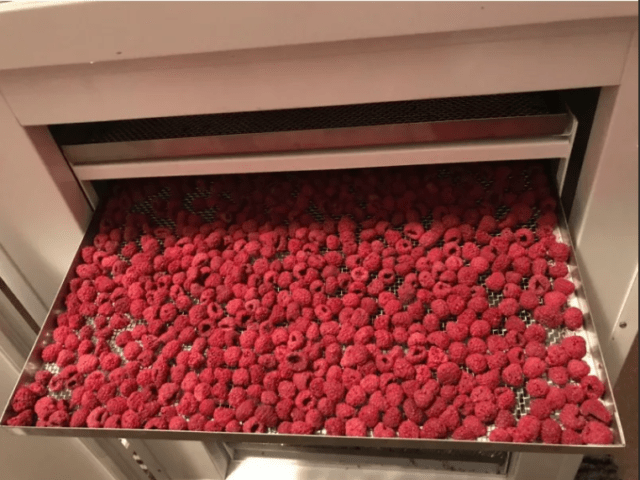
It is not recommended to heat the oven higher than 60 °C; the optimal temperature is 40-55 °C
How to dry raspberries in the microwave
The fastest method of drying, but in the process the berries significantly lose their usefulness and presentability. In addition, it is not possible to place a large batch in the microwave at once.
How to dry raspberries at home in the microwave:
- Cover the dish with baking paper or a linen napkin.
- Arrange the berries in one layer. Cover the top with a special lid or gauze to protect the “insides” of the microwave from juice splashes.
- Turn on the oven for three minutes at 200 W. Check the condition of the raspberries. If drying is not complete, repeat one more time, maximum two times.
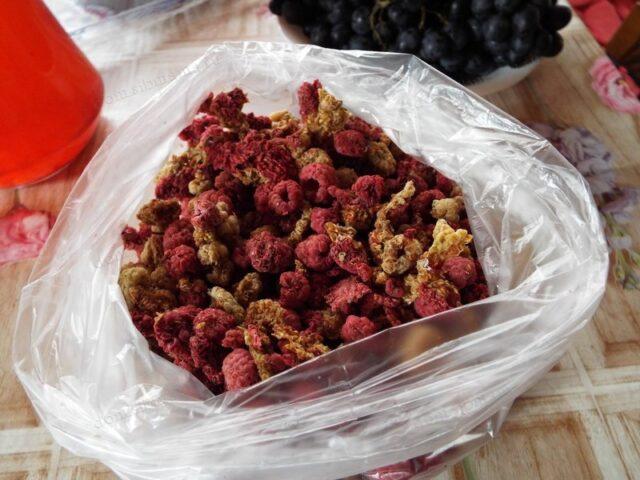
Raspberries often burst when dried in the microwave.
Drying raspberries in an air fryer
The main purpose of the air fryer is to prepare hot dishes. But, in principle, you can also use it for drying fruits and berries, including raspberries.
How to properly dry raspberries at home in an air fryer:
- Line a wire rack with 2-3 layers of cheesecloth or baking paper.
- Place raspberries on it to dry in one layer. Here the berries can come into contact with each other.
- Close the lid, turn on the device, setting it to a temperature of 40-60 °C and maximum blowing speed.
- Open the lid every 30-45 minutes to assess the condition of the berries.
- Remove the finished raspberries from the air fryer, let cool, and store.
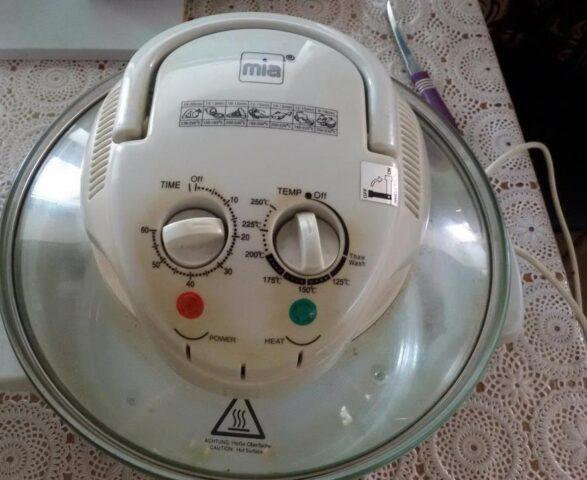
Drying in an air fryer will take about the same time as in an electric dryer.
How to dry raspberries in an electric dryer
A dehydrator (or electric dryer) is specifically designed for drying greens, berries, fruits, even fish and meat. The procedure lasts for about a day.
How to dry raspberries for the winter in an electric dryer:
- Arrange the berries on a wire rack. If there are several levels in the electric dryer, use them all.
- Set the temperature to 40-45 °C, turn on the dryer.
- Monitor the condition of the berries every hour.
- Upon completion of the procedure, turn off the device, let it cool completely, and remove the raspberries.
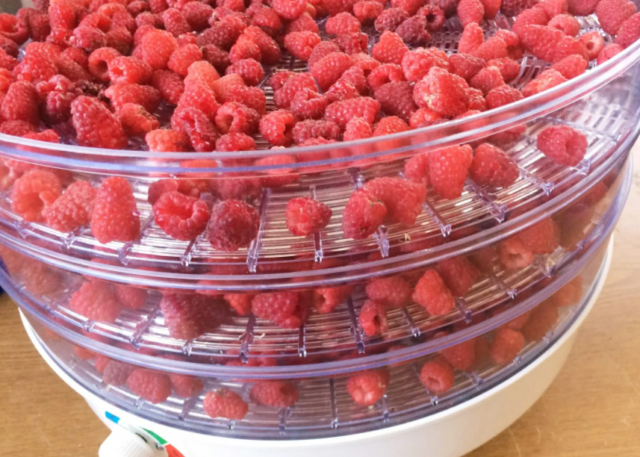
There is no need to turn raspberries in the dehydrator - convection ensures uniform drying process
How to dry raspberries for the winter in the sun
Compared to drying outdoors, the process is faster, taking 3-5 days. Therefore, they often resort to it, even taking into account significant losses in benefits. In the future, such raspberries are used for dishes that require heat treatment. The procedure is no different from drying outdoors, with one exception - the pallets are exposed to direct sunlight.
How to tell when raspberries are ready
Raspberries that are not completely dried will not last long. Its readiness is determined by several criteria:
- rich burgundy, sometimes with a purple tint, the color of berries;
- preserved characteristic taste and aroma;
- berries that are easily separated into individual drupes, do not release juice and are not at all sticky.
Storage conditions and periods
The maximum shelf life of raspberries after drying is two years. But gradually the taste, aroma and benefits disappear, so it is recommended to use it for 1-1.5 years.
Small portions of berries are stored in paper or linen bags, tightly sealed dark glass jars or opaque plastic containers. Any container is filled approximately halfway. If they are strung on a thread for drying, the raspberries are not removed from it.
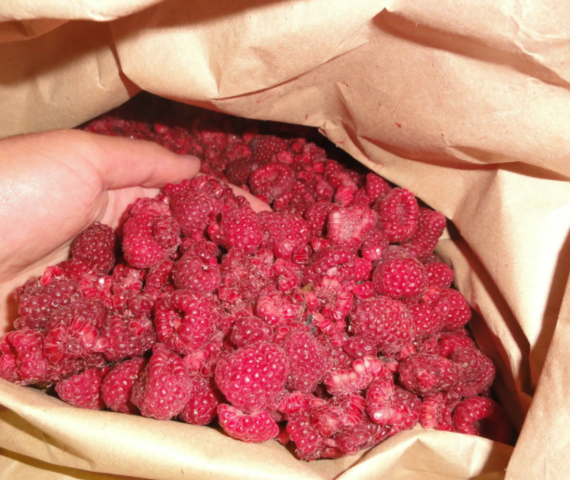
Raspberries after drying react very negatively to changes in temperature and humidity
What are the benefits of dried raspberries?
During drying, 70-75% of the moisture evaporates from raspberries, but the beneficial substances are retained. Accordingly, their concentration increases. Berries contain:
- vitamins (group B, A, C, E, PP);
- macro- and microelements (potassium, phosphorus, sodium, magnesium, manganese, copper, zinc, fluorine);
- pectins;
- essential oils;
- tannins;
- fruit acids (tartaric, malic, citric, salicylic).
This rich composition easily explains the “versatility” of the beneficial properties of dried raspberries for the body:
- general strengthening effect, increasing tone and immunity;
- strengthening the walls of blood vessels, preventing the deposition of cholesterol “plaques”;
- normalization of blood pressure, hormonal levels, metabolism, blood composition;
- restoration of the cardiovascular, gastrointestinal, and reproductive systems;
- maintaining youthful, healthy skin, hair, nails;
- help with chronic fatigue, severe stress, depression;
- mild diuretic effect, removal of waste and toxins;
- the presence of antipyretic and anti-inflammatory properties.
How to use dried raspberries
The most obvious use for dried raspberries is in cooking. The berry is suitable for preparing compotes, fruit drinks, jelly, vitamin teas, soufflés, mousses, other desserts, and baking fillings. This is a very useful “additive” for cereals, cottage cheese, and yogurt.
Dried raspberries are also actively used in folk medicine. It is part of many antipyretic and anti-inflammatory drugs. In home cosmetology, it is used as a component for masks and scrubs, after being ground into flour.

Tea with dried raspberries is an effective remedy for the prevention of colds
Conclusion
If you dry raspberries at home, you can preserve maximum of their benefits, taste and aroma. There are quite a lot of ways to “process” berries in this way, some of them do not require special household appliances. The finished product can be stored for two years; it can be used not only in cooking, but also in home cosmetology, as well as for treatment according to traditional medicine recipes.
